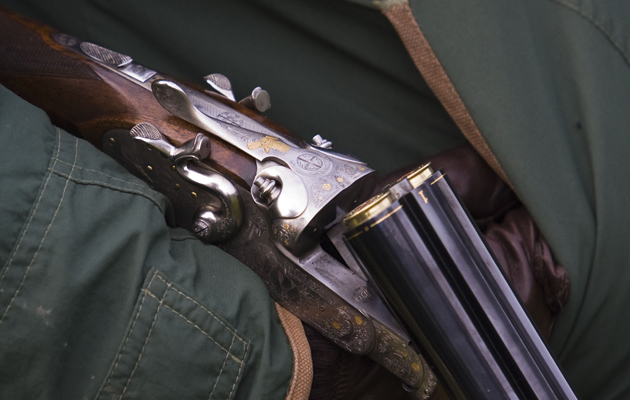Firearms safety and security has an excellent record in the UK. Richard Ali, chief executive of BASC, explains how shooting organisations have been working with the Home Office to maintain it.
Firearms safety and security is an issue at the forefront of the modern shooting world. Whether you enjoy rough shooting, driven pheasant or grouse shooting, are keen on the history of the shotgun and shooting or hanker after one of the world’s 20 best shotguns, firearms safety and security is paramount.
We’ve all seen newspaper headlines calling for further legal restrictions (and sometimes outright bans) on firearms safety and security. They tend to follow the sort of outrage that today’s world has spawned. Organisations such as my own and others that are members of the British Shooting Sports Council, spend considerable energy explaining why sound and evidenced processes can maintain public safety and the sporting freedoms and values that Britain is famed for and why yet more statutory controls are not the answer to every threat, however real.
This principle underscores shooting organisations’ approach to the firearms safety and security guidance developed by the police and Home Office, which looks to provide a framework governing unannounced home visits for police to check and advise on security arrangements. The guidance makes clear that visits, which should not be at un-social hours, must be “based on specific intelligence in light of a particular threat, or risk of harm”. The guidance also states that no new power of entry has been created and that certificate holders must be provided with a clear and reasoned explanation for the visit.
FIREARMS SAFETY AND SECURITY: WORKING TOGETHER
BASC’s dedicated firearms team is working actively with police forces across England and Wales to ensure that visits are in line with the Home Office guidance. The same is true of other organisations. This is good for responsible certificate holders, who welcome the reassurance it brings, and good for the police, who must make the best use of their resources.
Targeting resources is important given the actual number of firearms stolen or lost. At year end March 2014 there were 1,837,243 shotguns and firearms on certificate. During 2013/14, 330 shotguns and 85 firearms (including sound moderators) were stolen. In the same year 120 shotguns and 42 firearms were lost. This shows a declining trend in England and Wales over the past five years. The five-year total of 3,296 shotguns and firearms lost or stolen represents 0.18% of licensed firearms.
Shooting bodies are supportive of firearms safety and security, and crime prevention activities as everyone wishes to see those numbers fall further. Some unannounced visits will be made for reasons of threat, risk or harm that do not relate specifically to the certificate holder but may concern such factors as local rural or urban crime.
While all shooting organisations understood the Home Office guidance, we all questioned the need to expand the Crimestoppers family of telephone lines by establishing one dedicated to calls about firearms safety and security or sudden changes in the behaviour of certificate holders. Concerns were raised about whether a Crimestoppers line could sow confusion and lead to the sort of consequences we should all be seeking to avoid (such as malicious reporting by those opposed to shooting). In each case we highlighted that what might seem like a simple idea could actually hamper the efficient and effective use of resources.
Shooting organisations continued to work with the relevant authorities on firearms safety and security, suggesting alternatives to a separate Crimestoppers line that our members and certificate holders support, and using the power of shooting networks to help deploy resources centred on intelligence and risk. This work bore fruit.
As ever, the lesson from this episode is, I believe, for policy makers to give more thought to establishing the exact nature of the problem they seek to address and then ensure the selection of the right mechanisms to achieve results and avoid unintended consequences.
5 PRINCIPLES OF BETTER REGULATION
Help is at hand for government and other public bodies in the form of the Five Principles of Better Regulation. The principles were identified by the Better Regulation Task Force in 1997 as the basic tests of whether any regulation is fit for purpose. The five are:
- Proportionality: regulators should intervene only when necessary. Remedies should be appropriate to the risk posed, and costs identified and minimised.
- Accountability: regulators must be able to justify their decisions and be subject to public scrutiny.
- Consistency: government rules and standards must be joined up and implemented fairly.
- Transparency: regulators should be open, and keep regulations simple and user-friendly.
- Targeting: regulation should be focused on the problem and minimise side-effects.
While not specifically designed to address the crime prevention objectives of the Crimestoppers lines, I would suggest that the Department for Business, Innovation and Skills’ Better Regulation Framework Manual, published in 2013, could nonetheless serve as a useful blueprint in the design of policy tools. Indeed, this 90-page document styles itself as practical guidance and includes a wealth of information, including the use of impact assessments to help policy makers fully think through and understand the consequences of possible and actual interventions.
Responsible certificate holders support the police in their efforts to help firearms certificate holders maintain the excellent record of firearms safety and security. Where there is specific intelligence of threat, risk or harm then the police should act. After all, it is in our interests and in our nation’s interests.





